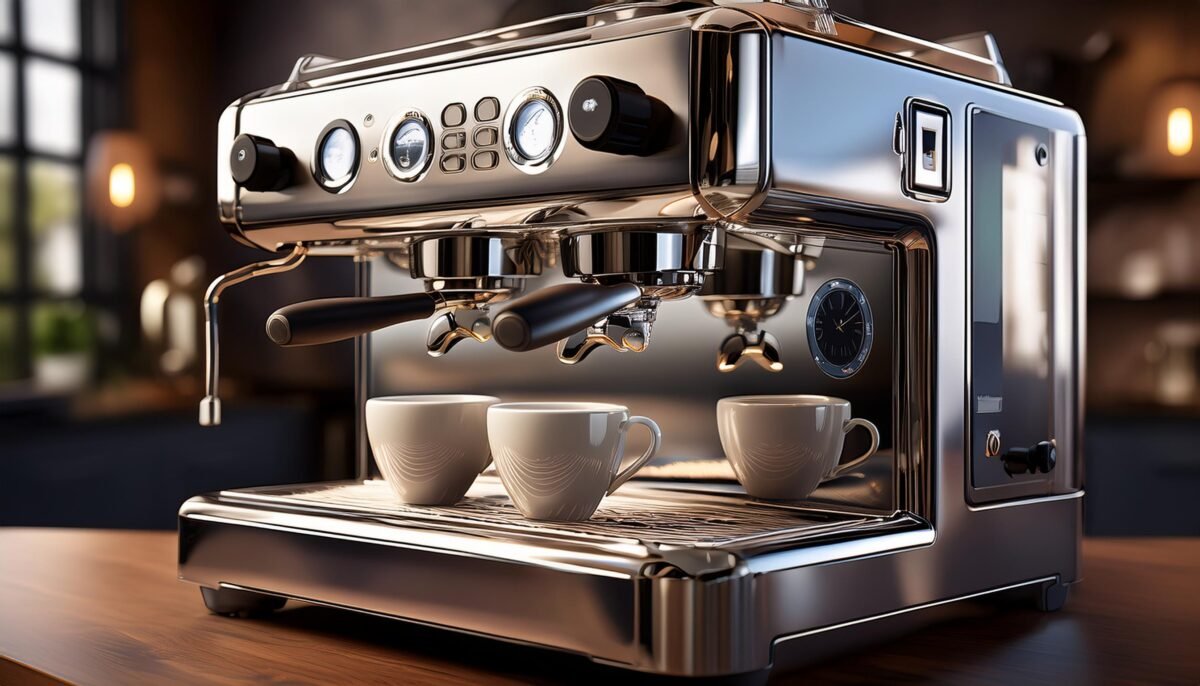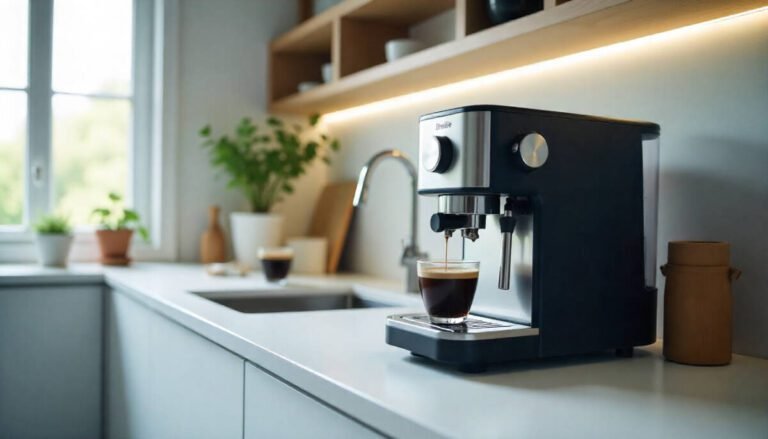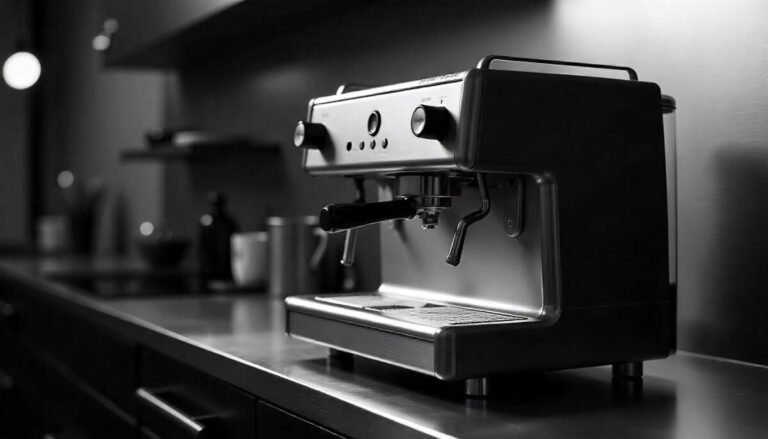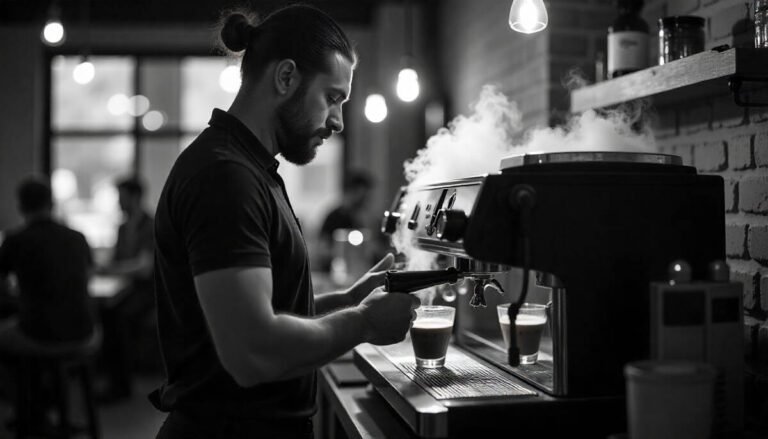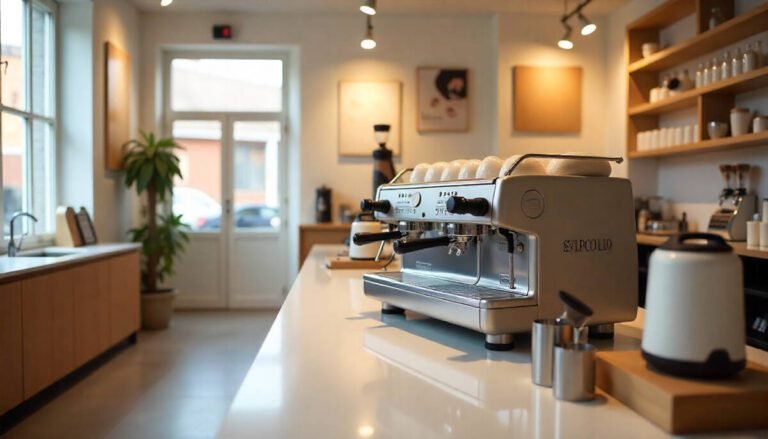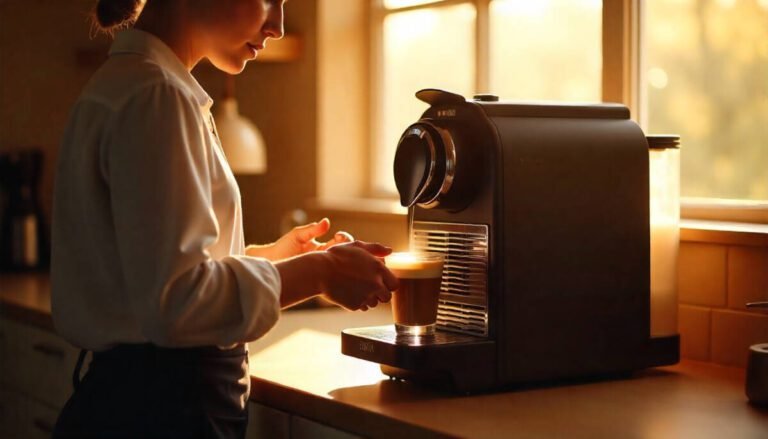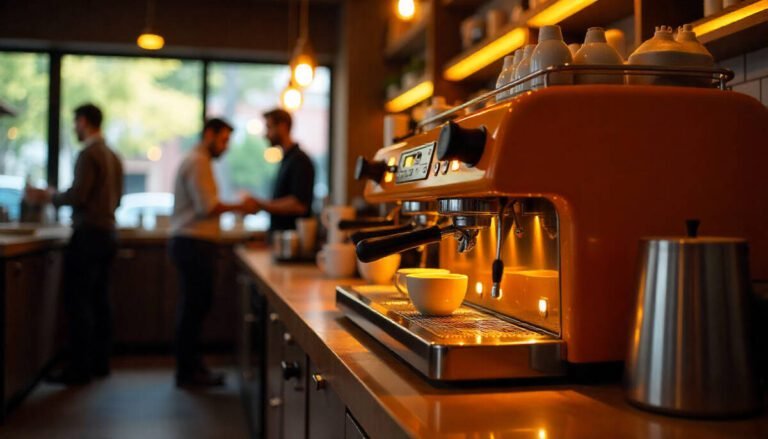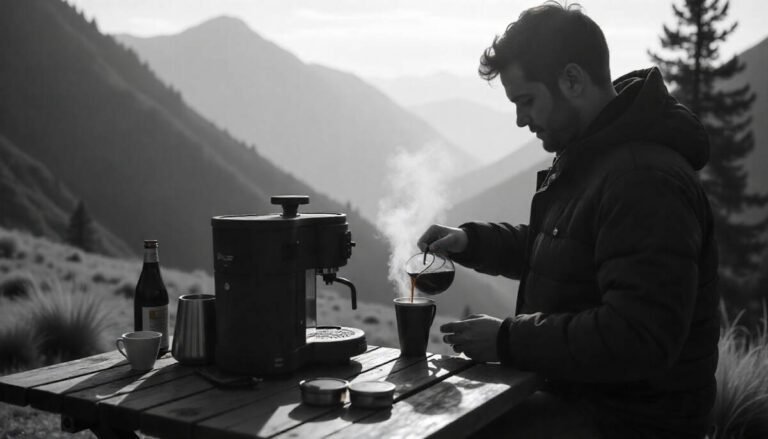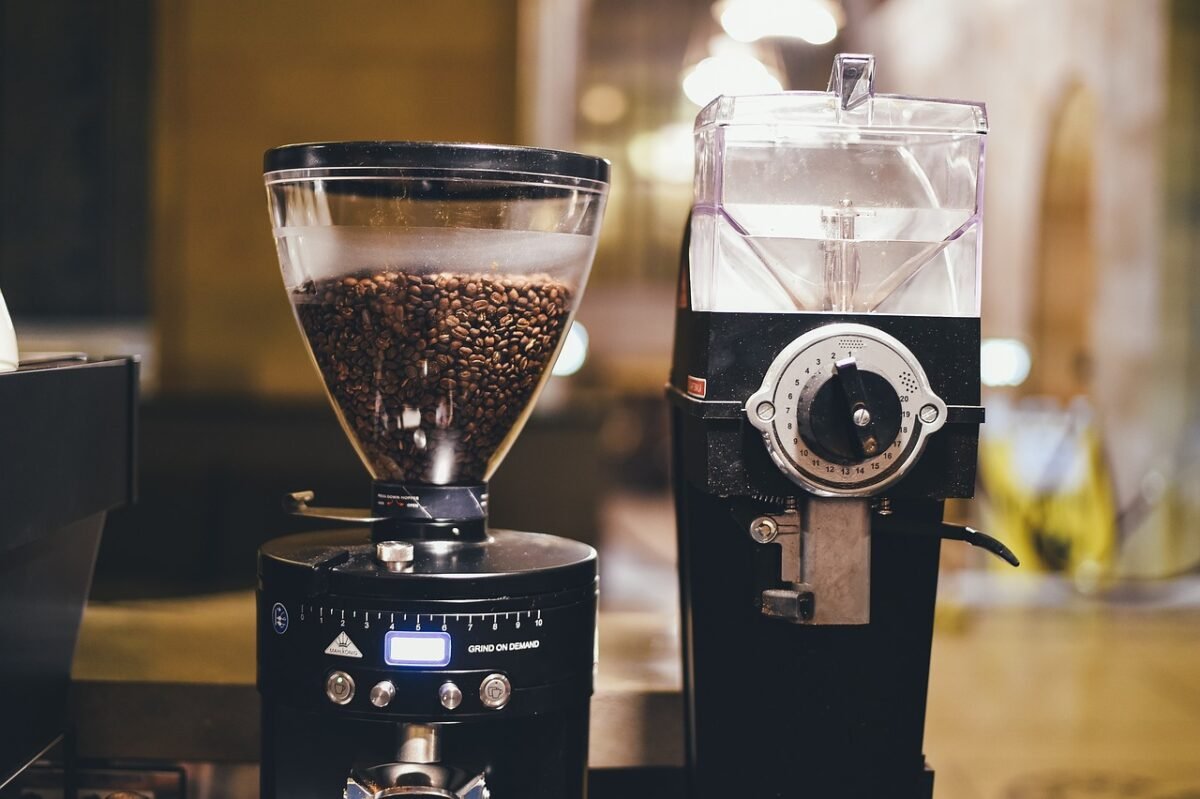If you’re serious about your coffee, you know that a great espresso machine can completely transform your morning ritual. In 2025, the competition among espresso machines is fiercer than ever, with new models boasting smarter tech, better pressure control, and café-grade results at home. After testing and researching dozens of machines this year, I’ve narrowed it down to the Ten best espresso machines that actually live up to the hype. Whether you’re a seasoned home barista or just getting started, this list will help you find the perfect machine that fits your skill level, lifestyle, and budget.
1. Breville Barista Touch Impress – Best Overall Espresso Machine 2025
Price: ~$1,199
Type: Semi-automatic with touchscreen
Best for: Everyday home baristas who want customization with convenience
The Breville Barista Touch Impress is hands-down the most balanced espresso machine for 2025. It combines intuitive automation with hands-on control, offering a café-style experience without the steep learning curve.
Automatic tamping, grinding, and milk frothing
Touchscreen display with guided recipes (latte, flat white, cappuccino)
ThermoJet heating system gets it ready in 3 seconds
Compact yet professional-grade performance
- If you want consistent results and full control over your brew without feeling overwhelmed, this is the one to beat.
- Check it out on Breville’s official website
2. Gaggia Classic Evo Pro – Best Value for Beginners
Price: ~$499
Type: Semi-automatic
Best for: Budget-conscious espresso lovers who prefer hands-on control
The Gaggia Classic Evo Pro is a timeless favorite that’s been upgraded for 2025. With its durable commercial-grade parts and simple design, this machine is perfect if you want to learn the art of espresso from the ground up.
58mm commercial portafilter
Updated stainless steel boiler and frame
Fast heat-up time (under 5 minutes)
No-frills operation with room to grow
- It’s one of the few machines under $500 that delivers a real barista experience. Great for purists who value build quality and reliability over gimmicks.
3. De’Longhi Dinamica Plus – Best Fully Automatic Espresso Machine
Price: ~$1,499
Type: Super-automatic
Best for: Coffee lovers who want café drinks with zero fuss
If you’re all about convenience and want your espresso with the push of a button, the De’Longhi Dinamica Plus is unbeatable. It comes with a built-in grinder, one-touch recipes, and even Bluetooth connectivity for app-based control.
18 pre-programmed beverages
Automatic milk frother with LatteCrema System
Touchscreen and app integration
Easy to clean and maintain
- This is one of the smartest bean-to-cup machines of 2025, making it ideal for busy mornings or households with multiple coffee drinkers.
4. La Marzocco Linea Micra – Best for Serious Home Baristas
Price: ~$2,900
Type: Manual
Best for: Hardcore enthusiasts who want professional results at home
The Linea Micra is a scaled-down version of La Marzocco’s legendary café machines—and it’s incredible. With dual boilers, PID temperature control, and a beautiful minimalist design, this is a true investment in home espresso excellence.
Dual-boiler system for simultaneous brew and steam
Wi-Fi connectivity for real-time control
Commercial-grade components in a compact form
Italian-made precision
- If you want the crème de la crème and are willing to put in the time to master your technique, this machine will spoil you for life.
5. Café Bellissimo Semi-Automatic – Best Stylish Espresso Machine
Price: ~$599
Type: Semi-automatic
Best for: Design lovers who want café-quality in a beautiful package
The Café Bellissimo is where aesthetics meet performance. With a retro-inspired look, powerful 15-bar pump, and built-in conical burr grinder, this machine is a hidden gem in 2025.
Sleek matte finish in white, black, or steel
Built-in smart tech with Wi-Fi capabilities
Adjustable temperature and shot volume
Compact footprint with premium feel
- It looks amazing on any kitchen counter and brews espresso that rivals much pricier machines.
6. Rancilio Silvia Pro X – Best for Precision Brewing
Price: ~$1,895
Type: Semi-automatic dual boiler
Best for: Home baristas who want commercial-level temperature control
The Rancilio Silvia Pro X is a serious upgrade for espresso lovers who’ve outgrown entry-level machines. With dual boilers and digital PID temperature control, it gives you complete precision over every extraction and milk frothing session.
Dual boiler system with PID for temp stability
Soft pre-infusion for improved flavor balance
Adjustable brew pressure
Exceptional build with stainless steel finish
- It’s ideal for intermediate to advanced home users who are chasing that perfect, repeatable shot.
7. Nespresso Creatista Pro by Breville – Best for Capsule Convenience
Price: ~$849
Type: Capsule-based automatic
Best for: Speedy espresso with no mess
For those who want quality espresso without the hassle of grinding, dosing, and tamping, the Nespresso Creatista Pro delivers Nespresso’s signature convenience with surprisingly rich results. Built by Breville, it adds professional steam wand control to the capsule world.
3-second heat-up with ThermoJet
Adjustable milk texture and temp for latte art
Beautiful stainless-steel build
Programmable espresso, ristretto, and lungo
- It’s a fantastic choice for busy professionals or anyone who wants premium espresso with a minimalist routine.
- Explore it on Breville’s official website
8. Lelit Bianca V3 – Best High-End Manual Espresso Machine
Price: ~$2,999
Type: Manual with flow control
Best for: Prosumer espresso perfectionists
The Lelit Bianca V3 is a premium-level machine designed for users who want full control over pressure, flow, and temperature. It’s fitted with an E61 group head, dual boilers, and a paddle system to adjust water flow mid-shot — a dream setup for espresso geeks.
Manual flow control paddle for shot profiling
Dual insulated boilers
Built-in PID and shot timer
Quiet rotary pump and external reservoir option
- If you’re the kind of person who weighs, times, and tweaks every shot, this machine is built for you.
9. Flair 58 Plus – Best Manual Lever Espresso Machine
Price: ~$649
Type: Manual lever press
Best for: Travel-friendly and minimalist baristas
If you want full control with no electricity and ultra-portability, the Flair 58 Plus delivers café-quality espresso with just your own effort. It’s become a cult favorite among traveling coffee enthusiasts and purists.
58mm portafilter with commercial compatibility
Manual pre-infusion and pressure profiling
Solid stainless steel construction
Heated brew chamber included (new in 2025 model)
- It’s surprisingly affordable for the control it gives you — and it looks stunning on any counter.
- Check out the Flair 58 Plus on Flair Espresso
10. Philips 4300 LatteGo – Best for Families & Office Use
Price: ~$899
Type: Super-automatic
Best for: Multi-user households and light office settings
The Philips 4300 LatteGo makes life easy with its one-touch drinks and low-maintenance design. It’s especially great for families or offices where multiple people want different drinks throughout the day.
Intuitive color display with 8 drink options
LatteGo milk system: fast and dishwasher-safe
Ceramic grinder with 12 settings
Compact and quiet operation
- It’s an ideal solution for those who value ease, consistency, and variety in one neat package.
Quick Add-On: Updated Comparison Table (for All 10)
| Espresso Machine | Type | Price | Best For |
|---|---|---|---|
| Breville Barista Touch Impress | Semi-auto | ~$1,199 | Best all-rounder |
| Gaggia Classic Evo Pro | Semi-auto | ~$499 | Beginners & budget users |
| De’Longhi Dinamica Plus | Super-auto | ~$1,499 | Push-button ease |
| La Marzocco Linea Micra | Manual | ~$2,900 | Professionals & enthusiasts |
| Café Bellissimo | Semi-auto | ~$599 | Style + performance |
| Rancilio Silvia Pro X | Semi-auto dual | ~$1,895 | Precision brewing |
| Nespresso Creatista Pro | Capsule-auto | ~$849 | Fast & clean capsule brewing |
| Lelit Bianca V3 | Manual w/ paddle | ~$2,999 | Full control and customization |
| Flair 58 Plus | Manual lever | ~$649 | Portability + pressure control |
| Philips 4300 LatteGo | Super-auto | ~$899 | Families or office settings |
Final Thoughts
In 2025, there’s an espresso machine for every type of coffee lover — from beginner to pro. Whether you value hands-on control, one-touch convenience, or sleek design, the right machine can elevate your daily routine into a true café experience. Invest in quality, match it to your needs, and enjoy better coffee at home every day.
FAQ – Best Espresso Machines of 2025
Q: What’s the difference between semi-automatic and fully automatic machines?
A: Semi-automatic machines give you control over the brew time and require manual tamping. Fully automatic (or super-automatic) machines handle everything—from grinding to brewing to milk frothing—with the press of a button.
Q: Do I need a separate grinder?
A: Some machines (like the Barista Touch Impress or Café Bellissimo) include built-in grinders. For machines without one (like the Gaggia Classic), investing in a quality burr grinder is recommended.
Q: Which is best for latte art?
A: The La Marzocco Linea Micra offers café-grade steam pressure, making it perfect for serious latte art. The Breville Barista Touch is also a great option with its microfoam capabilities.

